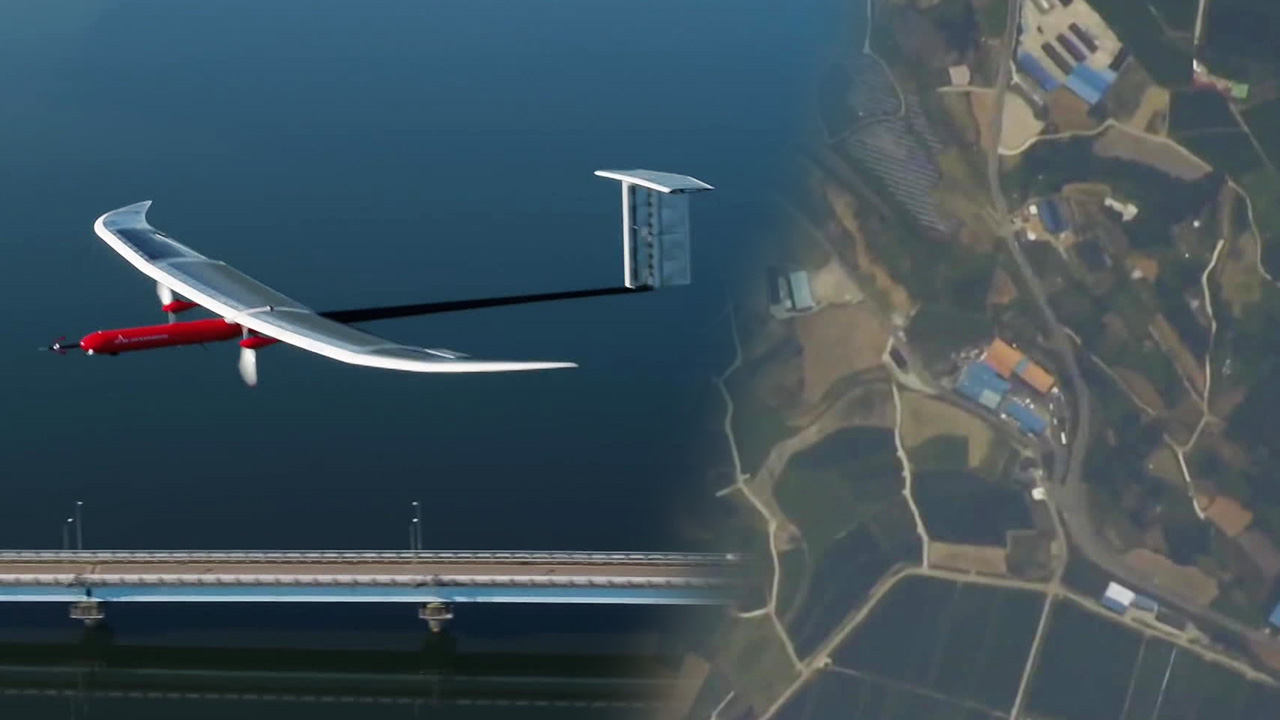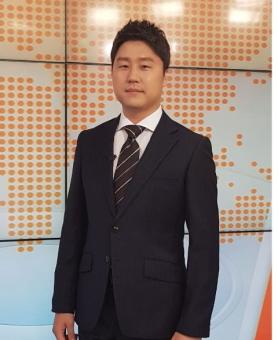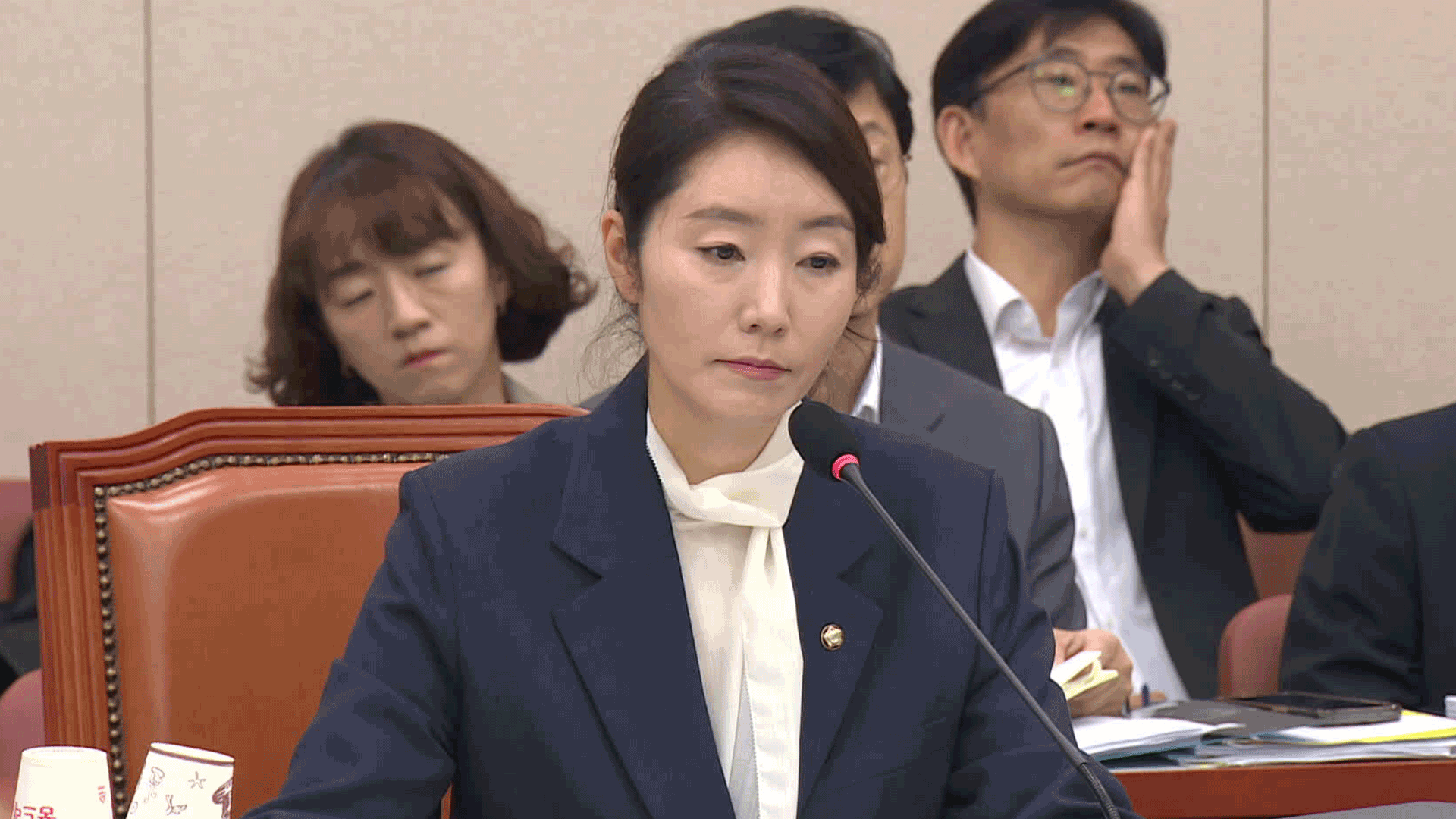Korea AeroSpace Administration to launch 30-day flight mission of stratospheric drones
입력 2024.10.28 (01:02)
읽어주기 기능은 크롬기반의
브라우저에서만 사용하실 수 있습니다.
[Anchor]
A blueprint has been presented for a drone to fly continuously for 30 days at altitudes higher than that of passenger aircraft, reaching the stratosphere.
This means that drones could perform roles comparable to satellites.
Jihyung Cheon reports.
[Report]
This is a test drone powered by solar cells.
After takeoff, the drone reached an altitude of 18 km, which is higher than that of passenger aircraft, and it successfully flew continuously for 53 hours over the skies of Goheung, Jeollanam-do Province.
Since it operates in the stratosphere, it is hardly affected by the weather, and it can receive stable power supply through solar energy.
Based on the success of this test flight, the commercialization of the so-called 'stratospheric drone' is being pursued.
The plan by the Korea AeroSpace Administration is to create a new aircraft with a wingspan of 30 meters and a payload capacity increased to 20 kg, aiming for continuous flight of 30 days as early as next month.
If successful, it is expected to be utilized for various missions such as communication relay, surveillance, and weather observation at a much lower cost than satellites.
According to the plan, mass production of the production model is set to begin in 2026.
[Lee Kwang-byeong/Director of Aviation Innovation Division, Korea AeroSpace Administration
: "In the case of air taxis, it is predicted that over 70% of the industrial ecosystem will be created in the service sector, but if we lay down communication networks and launch satellites, it will be unnecessarily more expensive. Stratospheric drones will be a very good solution."]
Not only global companies like Airbus and Facebook but also countries like China and the UK are developing stratospheric drones.
The Korea AeroSpace Administration plans to promote domestic production of key components such as solar cells and batteries, which have proven our competitiveness, to also support the growth of the drone industry.
This is Jihyung Cheon from KBS News.
Cameraman: Lee Sang-hoon/Graphics: Kim Kyung-jin
A blueprint has been presented for a drone to fly continuously for 30 days at altitudes higher than that of passenger aircraft, reaching the stratosphere.
This means that drones could perform roles comparable to satellites.
Jihyung Cheon reports.
[Report]
This is a test drone powered by solar cells.
After takeoff, the drone reached an altitude of 18 km, which is higher than that of passenger aircraft, and it successfully flew continuously for 53 hours over the skies of Goheung, Jeollanam-do Province.
Since it operates in the stratosphere, it is hardly affected by the weather, and it can receive stable power supply through solar energy.
Based on the success of this test flight, the commercialization of the so-called 'stratospheric drone' is being pursued.
The plan by the Korea AeroSpace Administration is to create a new aircraft with a wingspan of 30 meters and a payload capacity increased to 20 kg, aiming for continuous flight of 30 days as early as next month.
If successful, it is expected to be utilized for various missions such as communication relay, surveillance, and weather observation at a much lower cost than satellites.
According to the plan, mass production of the production model is set to begin in 2026.
[Lee Kwang-byeong/Director of Aviation Innovation Division, Korea AeroSpace Administration
: "In the case of air taxis, it is predicted that over 70% of the industrial ecosystem will be created in the service sector, but if we lay down communication networks and launch satellites, it will be unnecessarily more expensive. Stratospheric drones will be a very good solution."]
Not only global companies like Airbus and Facebook but also countries like China and the UK are developing stratospheric drones.
The Korea AeroSpace Administration plans to promote domestic production of key components such as solar cells and batteries, which have proven our competitiveness, to also support the growth of the drone industry.
This is Jihyung Cheon from KBS News.
Cameraman: Lee Sang-hoon/Graphics: Kim Kyung-jin
■ 제보하기
▷ 카카오톡 : 'KBS제보' 검색, 채널 추가
▷ 전화 : 02-781-1234, 4444
▷ 이메일 : kbs1234@kbs.co.kr
▷ 유튜브, 네이버, 카카오에서도 KBS뉴스를 구독해주세요!
- Korea AeroSpace Administration to launch 30-day flight mission of stratospheric drones
-
- 입력 2024-10-28 01:02:45

[Anchor]
A blueprint has been presented for a drone to fly continuously for 30 days at altitudes higher than that of passenger aircraft, reaching the stratosphere.
This means that drones could perform roles comparable to satellites.
Jihyung Cheon reports.
[Report]
This is a test drone powered by solar cells.
After takeoff, the drone reached an altitude of 18 km, which is higher than that of passenger aircraft, and it successfully flew continuously for 53 hours over the skies of Goheung, Jeollanam-do Province.
Since it operates in the stratosphere, it is hardly affected by the weather, and it can receive stable power supply through solar energy.
Based on the success of this test flight, the commercialization of the so-called 'stratospheric drone' is being pursued.
The plan by the Korea AeroSpace Administration is to create a new aircraft with a wingspan of 30 meters and a payload capacity increased to 20 kg, aiming for continuous flight of 30 days as early as next month.
If successful, it is expected to be utilized for various missions such as communication relay, surveillance, and weather observation at a much lower cost than satellites.
According to the plan, mass production of the production model is set to begin in 2026.
[Lee Kwang-byeong/Director of Aviation Innovation Division, Korea AeroSpace Administration
: "In the case of air taxis, it is predicted that over 70% of the industrial ecosystem will be created in the service sector, but if we lay down communication networks and launch satellites, it will be unnecessarily more expensive. Stratospheric drones will be a very good solution."]
Not only global companies like Airbus and Facebook but also countries like China and the UK are developing stratospheric drones.
The Korea AeroSpace Administration plans to promote domestic production of key components such as solar cells and batteries, which have proven our competitiveness, to also support the growth of the drone industry.
This is Jihyung Cheon from KBS News.
Cameraman: Lee Sang-hoon/Graphics: Kim Kyung-jin
A blueprint has been presented for a drone to fly continuously for 30 days at altitudes higher than that of passenger aircraft, reaching the stratosphere.
This means that drones could perform roles comparable to satellites.
Jihyung Cheon reports.
[Report]
This is a test drone powered by solar cells.
After takeoff, the drone reached an altitude of 18 km, which is higher than that of passenger aircraft, and it successfully flew continuously for 53 hours over the skies of Goheung, Jeollanam-do Province.
Since it operates in the stratosphere, it is hardly affected by the weather, and it can receive stable power supply through solar energy.
Based on the success of this test flight, the commercialization of the so-called 'stratospheric drone' is being pursued.
The plan by the Korea AeroSpace Administration is to create a new aircraft with a wingspan of 30 meters and a payload capacity increased to 20 kg, aiming for continuous flight of 30 days as early as next month.
If successful, it is expected to be utilized for various missions such as communication relay, surveillance, and weather observation at a much lower cost than satellites.
According to the plan, mass production of the production model is set to begin in 2026.
[Lee Kwang-byeong/Director of Aviation Innovation Division, Korea AeroSpace Administration
: "In the case of air taxis, it is predicted that over 70% of the industrial ecosystem will be created in the service sector, but if we lay down communication networks and launch satellites, it will be unnecessarily more expensive. Stratospheric drones will be a very good solution."]
Not only global companies like Airbus and Facebook but also countries like China and the UK are developing stratospheric drones.
The Korea AeroSpace Administration plans to promote domestic production of key components such as solar cells and batteries, which have proven our competitiveness, to also support the growth of the drone industry.
This is Jihyung Cheon from KBS News.
Cameraman: Lee Sang-hoon/Graphics: Kim Kyung-jin
-
-

지형철 기자 ican@kbs.co.kr
지형철 기자의 기사 모음
-
이 기사가 좋으셨다면
-
좋아요
0
-
응원해요
0
-
후속 원해요
0










![[단독] “윤석열·김용현 등 공모해 군사상 이익 해쳐”<br>…외환죄 대신 일반이적죄 적용](/data/layer/904/2025/07/20250714_3VTJV3.jpg)




이 기사에 대한 의견을 남겨주세요.